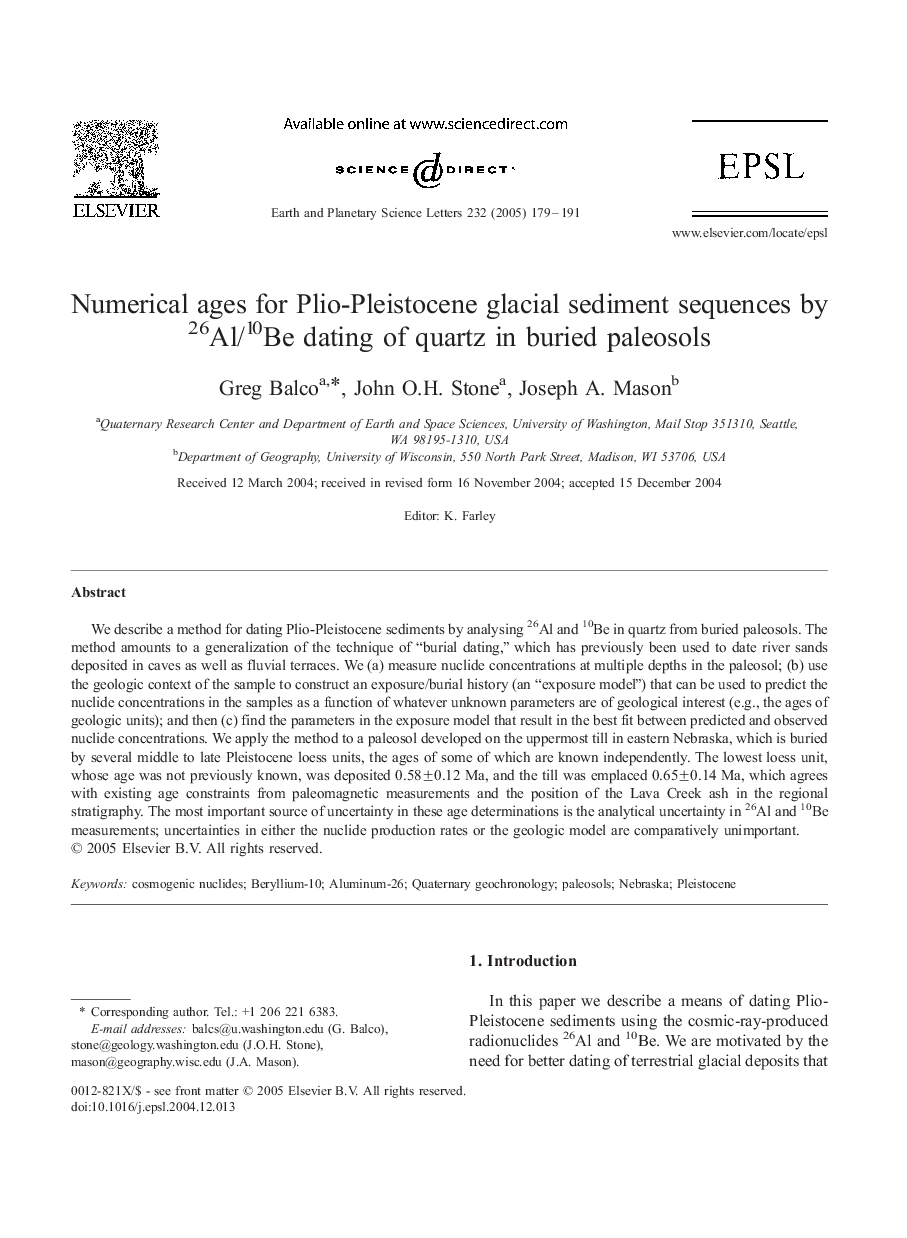| Article ID | Journal | Published Year | Pages | File Type |
|---|---|---|---|---|
| 9522717 | Earth and Planetary Science Letters | 2005 | 13 Pages |
Abstract
We describe a method for dating Plio-Pleistocene sediments by analysing 26Al and 10Be in quartz from buried paleosols. The method amounts to a generalization of the technique of “burial dating,” which has previously been used to date river sands deposited in caves as well as fluvial terraces. We (a) measure nuclide concentrations at multiple depths in the paleosol; (b) use the geologic context of the sample to construct an exposure/burial history (an “exposure model”) that can be used to predict the nuclide concentrations in the samples as a function of whatever unknown parameters are of geological interest (e.g., the ages of geologic units); and then (c) find the parameters in the exposure model that result in the best fit between predicted and observed nuclide concentrations. We apply the method to a paleosol developed on the uppermost till in eastern Nebraska, which is buried by several middle to late Pleistocene loess units, the ages of some of which are known independently. The lowest loess unit, whose age was not previously known, was deposited 0.58±0.12 Ma, and the till was emplaced 0.65±0.14 Ma, which agrees with existing age constraints from paleomagnetic measurements and the position of the Lava Creek ash in the regional stratigraphy. The most important source of uncertainty in these age determinations is the analytical uncertainty in 26Al and 10Be measurements; uncertainties in either the nuclide production rates or the geologic model are comparatively unimportant.
Keywords
Related Topics
Physical Sciences and Engineering
Earth and Planetary Sciences
Earth and Planetary Sciences (General)
Authors
Greg Balco, John O.H. Stone, Joseph A. Mason,
